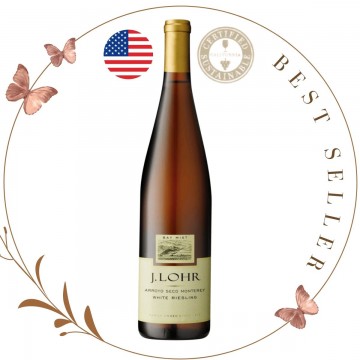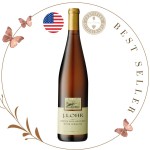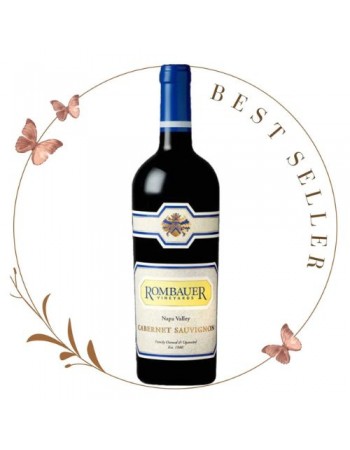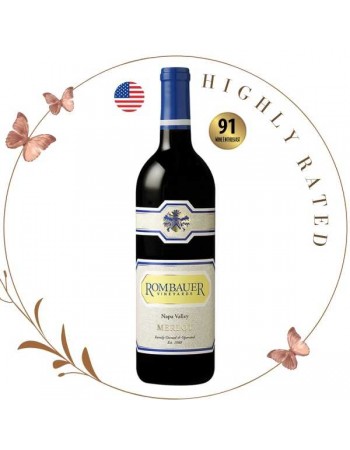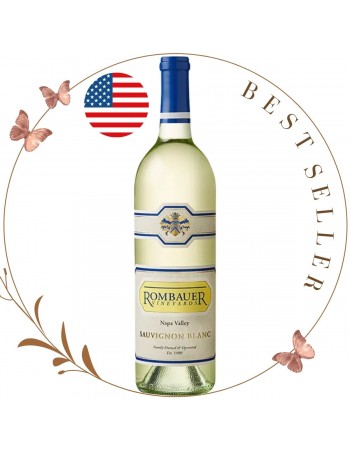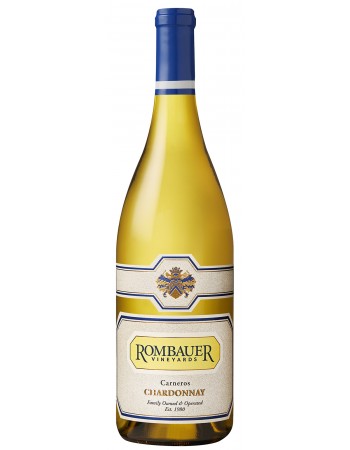2020 J Lohr Bay Mist White Riesling
-
S$4799
-
- 2+ for S$4499 each

Vintage: 2020
Region: California
Country: USA
Winemaker Notes
The 2019 J. Lohr Estates Bay Mist White Riesling is pale straw in color, offering aromas of honeysuckle, ripe pear, Meyer lemon, and lychee. These delicious aromas are complemented on the palate by cool climate minerality, rich texture, and a spritz of natural carbonation on the finish.
THE J. LOHR STORY
Fifty years ago, Jerry Lohr embarked on a career change. What followed would reshape the landscape of the California wine industry and create one of the country’s most popular wine brands.
In the late 1960s, Jerry Lohr began an extensive investigation of California grape growing regions – searching for the ideal location for his first vineyard. Jerry was raised on a South Dakota farm; his agricultural roots armed him with an innate sense for the relationship between climate, soil, and location. His research and instincts led him to the Central Coast, an area just beginning to explore its potential for winegrowing.
Four decades ago, the California Central Coast had not yet emerged as one of North America’s world-class winegrowing regions. With little history or viticultural precedent, planting on the Central Coast was a gamble. One of a handful of early pioneers, Jerry Lohr was among the first to realize the inherent potential of Monterey and Paso Robles for producing high quality grapes and superb wines.
PIONEERING MONTEREY AND PASO ROBLES -JERRY LOHR LEGACY-
It’s no coincidence that the Central Coast’s emergence as a world class winegrowing region runs parallel with the establishment and growth of J. Lohr Vineyards & Winery. Founder Jerry Lohr is one of the region’s pioneers and has played a larger-than-life role in bringing the area to prominence.
Jerry’s instincts led him to two regions located about 75 miles apart. In the early 1970s, he chose Monterey County’s Arroyo Seco district for its cool, windy climate and rocky soils as ideal for Chardonnay. In the 1980s, he recognized the potential of Paso Robles for growing Bordeaux varietals, especially Cabernet Sauvignon – given the area’s rich soils and dramatic diurnal temperature swings between warm days and cool nights.
After Jerry Lohr’s nearly decade-long search for the right place to plant his first vineyard, he chose a site in Monterey County that was to become the heart of the Arroyo Seco appellation. Jerry originally planted 280 acres in 1972 and 1973 near Greenfield. Monterey County’s Arroyo Seco appellation has proved ideal for growing layered, complex Chardonnay and Pinot Noir. Brisk winds and fog off Monterey Bay, stony, well-drained soils, and a lack of damaging fall rains all combine to produce grapes with trademark fruit intensity and balancing acidity. In 1974, Jerry unveiled the first J. Lohr winery in San Jose.
In the early 1980s, Jerry Lohr saw the potential for great Cabernet Sauvignon further south. Borrowing a lesson from the French—that great Chardonnay and Cabernet Sauvignon excel in very different growing conditions—Jerry began planting Cabernet Sauvignon and other red varieties in San Luis Obispo County’s little-known Paso Robles region in 1986. With the hands-on devotion of an artisan farmer, Jerry tended to the vines while diligently working toward the creation and development of an adjacent winery and barreling cellars; J. Lohr’s Paso Robles production facility was opened in 1988.
THE J. LOHR STORY
Fifty years ago, Jerry Lohr embarked on a career change. What followed would reshape the landscape of the California wine industry and create one of the country’s most popular wine brands.
In the late 1960s, Jerry Lohr began an extensive investigation of California grape growing regions – searching for the ideal location for his first vineyard. Jerry was raised on a South Dakota farm; his agricultural roots armed him with an innate sense for the relationship between climate, soil, and location. His research and instincts led him to the Central Coast, an area just beginning to explore its potential for winegrowing.
Four decades ago, the California Central Coast had not yet emerged as one of North America’s world-class winegrowing regions. With little history or viticultural precedent, planting on the Central Coast was a gamble. One of a handful of early pioneers, Jerry Lohr was among the first to realize the inherent potential of Monterey and Paso Robles for producing high quality grapes and superb wines.
PIONEERING MONTEREY AND PASO ROBLES -JERRY LOHR LEGACY-
It’s no coincidence that the Central Coast’s emergence as a world class winegrowing region runs parallel with the establishment and growth of J. Lohr Vineyards & Winery. Founder Jerry Lohr is one of the region’s pioneers and has played a larger-than-life role in bringing the area to prominence.
Jerry’s instincts led him to two regions located about 75 miles apart. In the early 1970s, he chose Monterey County’s Arroyo Seco district for its cool, windy climate and rocky soils as ideal for Chardonnay. In the 1980s, he recognized the potential of Paso Robles for growing Bordeaux varietals, especially Cabernet Sauvignon – given the area’s rich soils and dramatic diurnal temperature swings between warm days and cool nights.
After Jerry Lohr’s nearly decade-long search for the right place to plant his first vineyard, he chose a site in Monterey County that was to become the heart of the Arroyo Seco appellation. Jerry originally planted 280 acres in 1972 and 1973 near Greenfield. Monterey County’s Arroyo Seco appellation has proved ideal for growing layered, complex Chardonnay and Pinot Noir. Brisk winds and fog off Monterey Bay, stony, well-drained soils, and a lack of damaging fall rains all combine to produce grapes with trademark fruit intensity and balancing acidity. In 1974, Jerry unveiled the first J. Lohr winery in San Jose.
In the early 1980s, Jerry Lohr saw the potential for great Cabernet Sauvignon further south. Borrowing a lesson from the French—that great Chardonnay and Cabernet Sauvignon excel in very different growing conditions—Jerry began planting Cabernet Sauvignon and other red varieties in San Luis Obispo County’s little-known Paso Robles region in 1986. With the hands-on devotion of an artisan farmer, Jerry tended to the vines while diligently working toward the creation and development of an adjacent winery and barreling cellars; J. Lohr’s Paso Robles production facility was opened in 1988.
VINTAGE
The 2019 growing season was very similar to 2018 in the Arroyo Seco, and was characterized by a mild spring and moderate summer. With cool mornings and evenings, the Arroyo Seco weather was close to ideal for ripening the White Riesling grapes. The afternoon winds in the Salinas Valley increased the texture and extended the ripening for Riesling into November, just before the season turned. The cool nights allowed the vines to retain their natural acidity with just enough ripeness to show the tropical side of this varietal. The Bay Mist White Riesling is a complex blend of two clones - FPS Clone 10, whose origin is unknown, and FPS Clone 17 from Geisenheim, Germany. These complementary clones provide a spectrum of varietal aromas, from citrus, lemongrass, and floral, to focused minerality.
VINEYARDS
The vines for our J. Lohr Estates Bay Mist White Riesling are grown in well-drained Chualar loam soils underlain by stones deposited from the Arroyo Seco River. The Region I climate, in concert with the winds of the Salinas Valley, extend the average growing season well into late October, preserving the natural grape acidity and vibrant fruit flavors. Our primary goal with this varietal is to evoke the purest manifestation of fruit from the vineyard, enhanced by a combination of cultured yeasts fermented in stainless steel to showcase the grape’s complex character.
“The 2019 J. Lohr Estates Bay Mist White Riesling is pale straw in color, offering aromas of honeysuckle, ripe pear, Meyer lemon, and lychee. These delicious aromas are complemented on the palate by cool climate minerality, rich texture, and a spritz of natural carbonation on the finish.” —Kristen Barnhisel, winemaker, white wines

